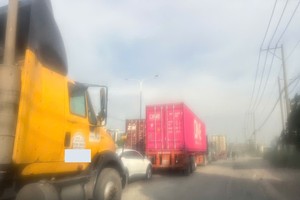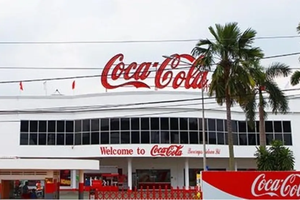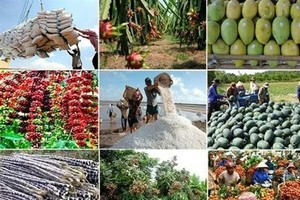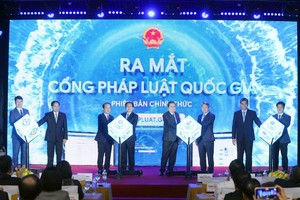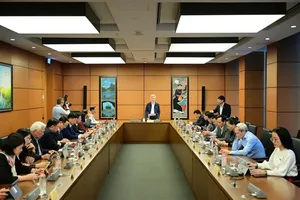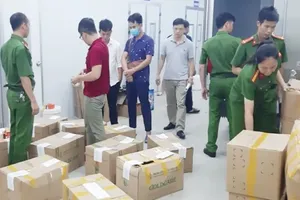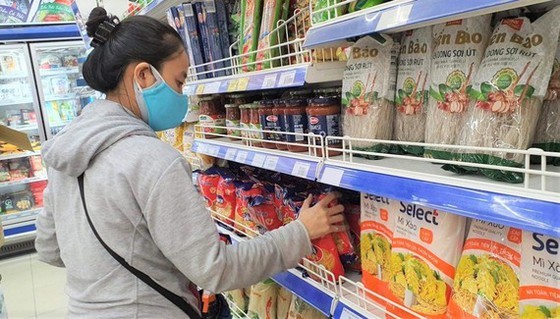 Some food enterprises said that the draft circular of the Ministry of Health on nutrition labeling has many shortcomings. (Photo: SGGP)
Some food enterprises said that the draft circular of the Ministry of Health on nutrition labeling has many shortcomings. (Photo: SGGP)
Representatives of many food businesses have raised some specific recommendations that are worth considering, from labeling principles, label contents, and implementation roadmap to transitional terms.
As for the scope of regulation, enterprises propose to consider adding to the exclusion list groups of infant nutrition products, medical nutrition food, food for a special diet, and healthcare food products. The reason is that the nutritional needs of young children and special subjects are far different from the level of 2,000kcal for healthy adults. Moreover, it has been specified separately in QCVN and/or Circular No.43/2014/TT-BYT. If not excluded, the relevant provisions in Circular 43 and QCVN must be integrated, and Circular No.43 should be annulled.
Enterprises also believe that many products in this draft circular are beyond the decrees that this circular guides the implementation, such as fresh food and processed food that are without packaging and sold directly to customers. At the same time, the drafting agency is asked to consider excluding alcohol and beer because the labeling of seven substances as prescribed, including energy, protein, carbohydrates, total sugar, fat, saturated fat, and sodium, for alcohol drinks is unreasonable.
In addition, many businesses are concerned about the requirement stated in the draft (labeling all seven substances). If risk management methods are not applied, it will increase the cost of testing. For comparison, enterprises cited that Japan only required to label five criteria, including energy, protein, carbohydrates, fat, and sodium. With two more criteria, it is estimated that Vietnamese enterprises will have to spend an additional VND620 billion (US$27.07 million) for the first year of application and VND206 billion ($8.99 million) per year thereafter.
A leader of a food enterprise said that in order to get information for labeling, enterprises must test at least three times for the calculation of average value. And according to ISO, if not testing each batch, enterprises must re-test at least once a year to see if this value is still correct or not. For example, the price of saturated fat testing at the National Institute of Food Testing is currently VND1.1 million ($48.02) per sample. According to data from the Vietnam Food Administration, in three years from 2015 to 2017, the agency had granted registration certificates for 113,000 food products, so there are about 188,000 food products in five years. Just taking into account 50% of this amount on the market, there will be 94,000 food products, and for every three tests to label one criterion, with 94,000 products, businesses have to spend about VND300 billion. Then, they will continue to have to spend about another VND100 billion to maintain at least one test annually.
Obviously, the cost for a tiny line of information on the label is not small at all. If it brings real value, enterprises will have to implement it despite its expensiveness. However, if it is indeed as reflected by enterprises, it is necessary to reconsider, especially in the context that the resources of many businesses have been significantly eroded after fighting against the Covid-19 pandemic for a long time. It is essential to be resolute and strict with wrongdoing and negligent acts but also needs to be realistic, avoiding torturing enterprises unnecessarily.
As for the scope of regulation, enterprises propose to consider adding to the exclusion list groups of infant nutrition products, medical nutrition food, food for a special diet, and healthcare food products. The reason is that the nutritional needs of young children and special subjects are far different from the level of 2,000kcal for healthy adults. Moreover, it has been specified separately in QCVN and/or Circular No.43/2014/TT-BYT. If not excluded, the relevant provisions in Circular 43 and QCVN must be integrated, and Circular No.43 should be annulled.
Enterprises also believe that many products in this draft circular are beyond the decrees that this circular guides the implementation, such as fresh food and processed food that are without packaging and sold directly to customers. At the same time, the drafting agency is asked to consider excluding alcohol and beer because the labeling of seven substances as prescribed, including energy, protein, carbohydrates, total sugar, fat, saturated fat, and sodium, for alcohol drinks is unreasonable.
In addition, many businesses are concerned about the requirement stated in the draft (labeling all seven substances). If risk management methods are not applied, it will increase the cost of testing. For comparison, enterprises cited that Japan only required to label five criteria, including energy, protein, carbohydrates, fat, and sodium. With two more criteria, it is estimated that Vietnamese enterprises will have to spend an additional VND620 billion (US$27.07 million) for the first year of application and VND206 billion ($8.99 million) per year thereafter.
A leader of a food enterprise said that in order to get information for labeling, enterprises must test at least three times for the calculation of average value. And according to ISO, if not testing each batch, enterprises must re-test at least once a year to see if this value is still correct or not. For example, the price of saturated fat testing at the National Institute of Food Testing is currently VND1.1 million ($48.02) per sample. According to data from the Vietnam Food Administration, in three years from 2015 to 2017, the agency had granted registration certificates for 113,000 food products, so there are about 188,000 food products in five years. Just taking into account 50% of this amount on the market, there will be 94,000 food products, and for every three tests to label one criterion, with 94,000 products, businesses have to spend about VND300 billion. Then, they will continue to have to spend about another VND100 billion to maintain at least one test annually.
Obviously, the cost for a tiny line of information on the label is not small at all. If it brings real value, enterprises will have to implement it despite its expensiveness. However, if it is indeed as reflected by enterprises, it is necessary to reconsider, especially in the context that the resources of many businesses have been significantly eroded after fighting against the Covid-19 pandemic for a long time. It is essential to be resolute and strict with wrongdoing and negligent acts but also needs to be realistic, avoiding torturing enterprises unnecessarily.

